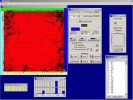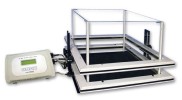Authors
R. Lalonde, M. Le Pêcheur, C. Strazielle, J. London.
Lab
Université de Rouen, Faculté de Médecine et de Pharmacie, INSERM U614, Rouen, France ; CHUM/St-Luc, Unité de Recherche en Sciences Neurologiques, Montréal, Canada ; Université de Paris, Paris, France.
Journal
Brain Research Bulletin
Abstract
SOD1 is one of several overexpressed genes in trisomy 21. In order to dissect possible genetic causes of the syndrome, wild-type SOD1/SOD1 transgenic mice were compared to FVB/N non-transgenic controls at 5 months of age in tests of exploratory activity and motor coordination. Wild-type SOD1/SOD1 transgenic mice had fewer stereotyped movements in an open-field and fell sooner from a rotorod than controls. In contrast, wild-type SOD1/SOD1 transgenic mice had fewer falls on a wire suspension test. There was no intergroup difference for ambulatory movements in the open-field, exploration of the elevated plus-maze, emergence from a small compartment, and motor coordination on a stationary beam. These results indicate that homozygous mice expressing human SOD1 are impaired in their ability to adjust their posture in response to a moving surface and make fewer small-amplitude movements without any change in general exploratory activity.
BIOSEB Instruments Used:
Acquisition software: ACTITRACK (ACTITRACK),Infrared Actimeter (LE8815)

 Pain - Thermal Allodynia / Hyperalgesia
Pain - Thermal Allodynia / Hyperalgesia Pain - Spontaneous Pain - Postural Deficit
Pain - Spontaneous Pain - Postural Deficit Pain - Mechanical Allodynia / Hyperalgesia
Pain - Mechanical Allodynia / Hyperalgesia Learning/Memory - Attention - Addiction
Learning/Memory - Attention - Addiction Physiology & Respiratory Research
Physiology & Respiratory Research
 Pain
Pain Metabolism
Metabolism Motor control
Motor control Neurodegeneration
Neurodegeneration Cross-disciplinary subjects
Cross-disciplinary subjects Muscular system
Muscular system General activity
General activity Mood Disorders
Mood Disorders Other disorders
Other disorders Joints
Joints Central Nervous System (CNS)
Central Nervous System (CNS) Sensory system
Sensory system Bioseb on booth #14 at OARSI 2024 in Vienna
Bioseb on booth #14 at OARSI 2024 in Vienna 
